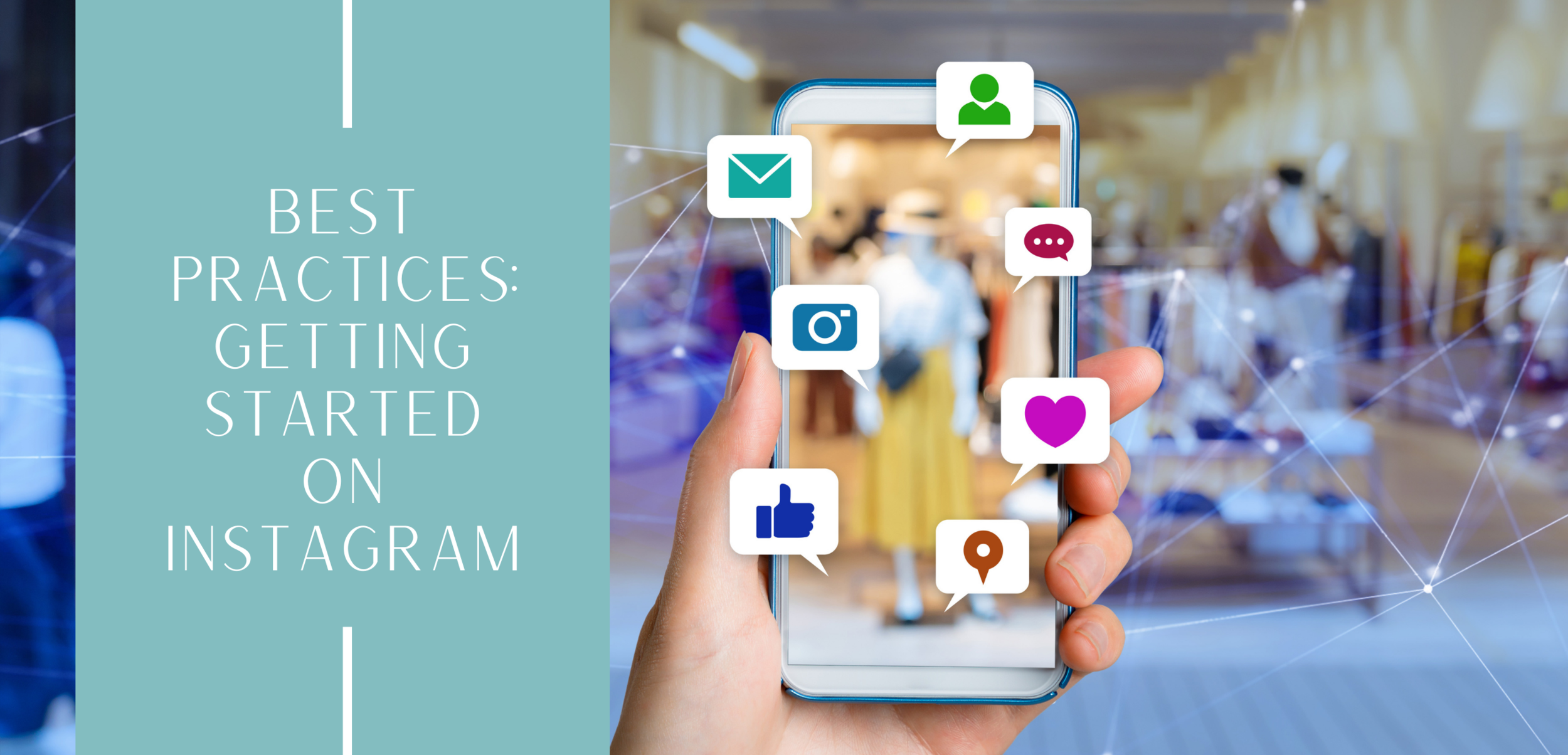Best Practices: Getting started on Instagram
If you don’t have an Instagram for your business yet – or perhaps you’re starting a new business and need to start a brand new Instagram account – best practices to grow your audience will vary slightly from those who already have a solid follower base. While starting from scratch is a difficult venture, with these tips from us and a consistent time commitment from your team, your Instagram account will be up and running with a loyal follower base in no time.
#1. Business Account vs. Personal Account
There are a number of “Instagram Myths” roaming around the platform and its users, and one of them is that switching to a business account from a personal account will hurt your reach. However, this is simply just that: a myth!
According to a statement released by Instagram, business accounts and personal accounts do not differ in their feed presence. A study conducted on this statement concluded that personal accounts have 1% higher engagement rates than business accounts, but this only applies to accounts with 10,000 or more followers.
Our takeaway? If you’re just starting out on Instagram or have less than 10,000 followers, use a business account! It provides the benefits of Instagram Insights, which we’ll dive deeper into in just a bit, as well as the opportunity to utilize paid ads if your budget allows. And then if you hit 10,000 followers in the future and want to take advantage of that 1% engagement rate by switching to a personal account, that’s cool too.
#2. Hashtags
Even if you’re not on Instagram or Twitter or any social media for that matter, you’ve probably heard of hashtags. In case you don’t know what they are, hashtags are metadata tags marked with the “#” symbol (hence the name) that allow users to search for specific subject matters and topics on relevant platforms.
Instagram allows 30 hashtags on each post, and using more isn’t that great of an idea anyways. It is absolutely a best practice to use all 30 allowed hashtags on each post, but it’s also a matter of how to use all 30! If your caption was just #all #30 #hashtags, #wouldn’t #that #be #super #annoying?
A few best practices for those 30 hashtags you should be using:
When you’re first starting out, use niche hashtags! This should align with your niche target audience you’ve identified. Look up the hashtags relevant to your post and use the ones with less than 200k posts. Mix them up with a handful of hashtags with less than 50k posts. Of course, you can also throw in a few very popular (more than 1m posts) hashtags for those extra likes, but these won’t help you with your long term Instagram strategy.
Add the 30 hashtags as an afterthought. That is, your caption should still be valuable and genuine, with insights adding to your post or sharing more about your business/yourself. The hashtags are a strategic necessity to your Instagram posts, so make it seem like that by adding them at the very bottom of your caption OR commenting with them after you’ve posted.
Before and/or after you’ve posted new content, pick a few of the most relevant hashtags you used and engage with the most recent posts on that hashtag. This will help your post increase its reach and engage with other profiles posting similar content!
#3. Reels
It’s no secret that the Instagram algorithm is pushing engagement for IG reels, Instagram’s newest content feature. So our best practice for reels? MAKE THEM!
We could do a whole blog post on reels alone (and this is coming soon) but for now, a few tips as you begin making reels:
Make them high quality but not too produced: people want to see the real you, but they want to see the real you in HD. Smartphone cameras are more than sufficient.
Prepare a cover photo: If you’re maintaining a certain pattern of brand colors on your feed (which you should), you want your reels to match this pattern. You can upload an image as your reel cover photo, so just prepare it ahead of time as you would plan the rest of your feed with regular posts.
The first 3 seconds should be super attention catching!
Always include text of some sort into your video.
Use popular audio, or an engaging voice over.
#4. Insights
Finally, going back to Instagram Insights that we mentioned above, if you’re a data driven person, insights will become your bread and butter as you continue to be active on Instagram. You have access to a good amount of data insights simply by signing up for a business account.
With access to such data, you can see which days of the week and times of the day your audience engages with your account most, which basically decides for you when you should be posting. It also gives you insight into which posts perform best aka what type of content you should be focusing on, as well as hashtags that perform best (this requires a little extra work; if you’re curious, DM us on Instagram!).
This wraps up some of our basic best practices as you start an Instagram account. One element of an Instagram strategy that we didn’t address here that’s also super important to starting out is utilizing DM’s on Instagram (also called Instagram Direct). Amongst these points, there’s so much more to Instagram than can meet the eye, so if you found this valuable or insightful, comment to let us know and perhaps we’ll return with a part 2!

